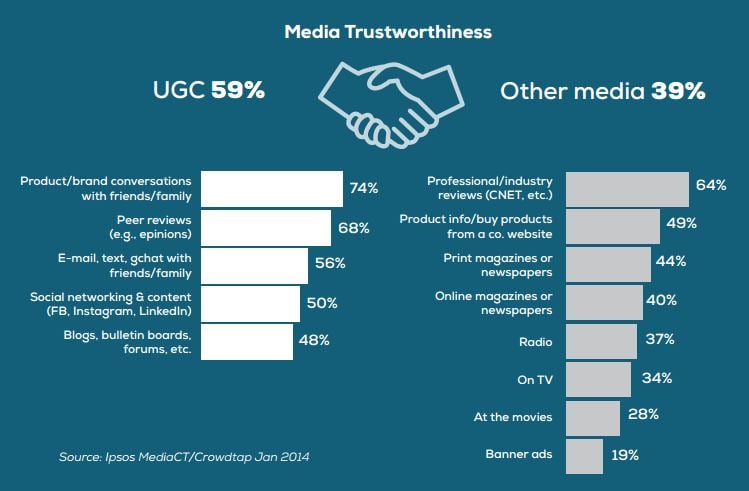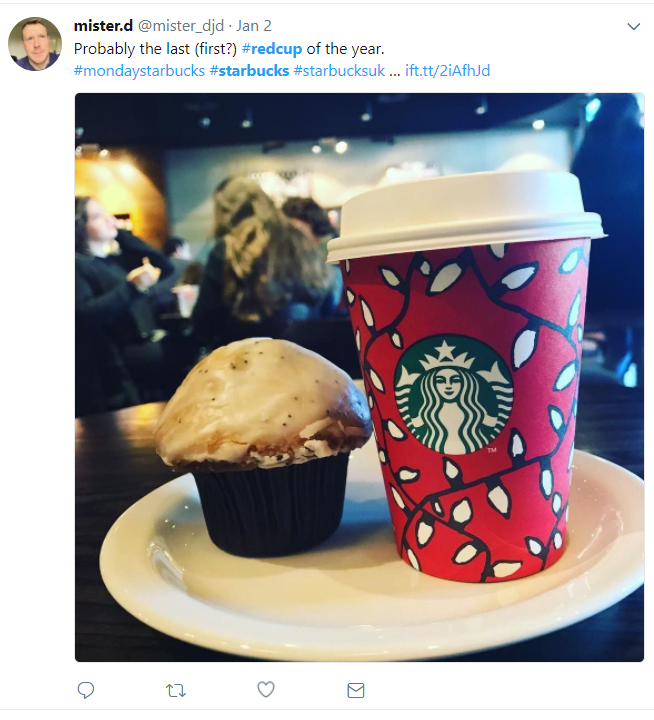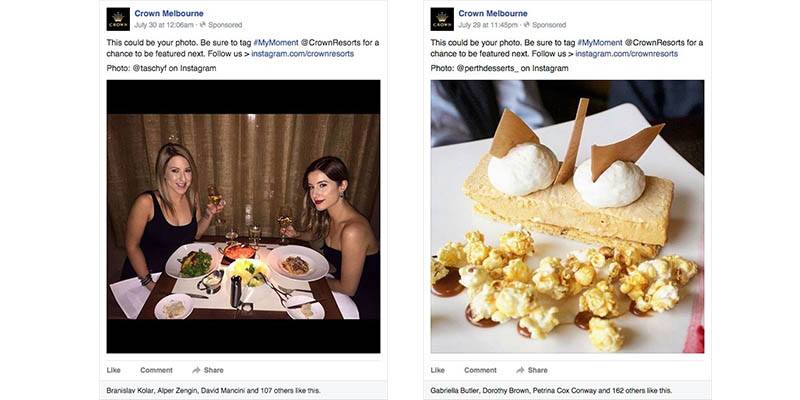Showing dynamic product ads, branded videos, and various action shots of your product is all fine and well on Facebook, but the problem is that everyone is doing it and it doesn’t make your content stand out.
One of the best ways to get your organic and paid ads to stick out like a sore thumb in the Facebook newsfeed is to get yourself user-generated content (UGC).
Compared to traditional advertising methods, consumers consider UGC more trustworthy.

(Source)
UGC is an underutilized form of content that brands aren’t using. In this article I’ll show you:
- how to get free UGC, and
- how to leverage UGC to drive more traffic and sales.
How to get free user-generated content
There are two ways you can get huge amounts of user-generated content for free. They are:
Content campaign – Set up a campaign where you encourage users to send you images and videos based around your product or service. Starbucks do this every year with their red holiday cups, with thousands of people sending them content on Facebook, Twitter, and Instagram.

If you have a large and active following on social media, it shouldn’t be too hard for customers to send content in. Just be sure to set some parameters on what kind of content you’d like them to send in.
Repurpose their content to fit in with your ads , create collages if applicable, or mix and match various UGC together. Just be sure to ask your customers for their permission before you use it within your marketing materials.
Reach out to influencers – An influencer is an independent person or brand that has no relationship with your business but has a large following within your industry.
You simply reach out to them in a number of ways and ask them if they’d like to team up with your brand. You can provide them with free products or strike a deal with them.
In the example below, EA Sports have teamed up with Mike Tyson to promote their latest console and game.

This is not to get user generated content.
While the post received tons of shares and engagement, there are two problems.
First, it’s not user generated (I really doubt Mike Tyson took that photo).
Second, they most likely paid Mike Tyson a lot of money to make that post.
Compare that UGC to Rasheeda, who created her own content which Sneaky Vault can later re-purpose themselves:

The second piece of content appears to be way more organic and less sales-heavy than the first. That’s the whole point of UGC; it should not appear too sales-heavy or in your face.
When looking for social media influencers, look for those who have between 100k-500k fans. These are users who have a large following but haven’t hit the mass market yet, allowing you to get content for free in exchange for your product or at a very discounted price over celebrities like Mike Tyson.
How to use UGC in Facebook ads
Depending on the type of UGC you receive, ultimately you will need to decide on how you promote it on Facebook to drive more engagement and sales.
For example, if you receive UGC in the form of video that shows your customers using your product, un-boxing it, or having a good time with it, this type of content is ideal for cold audiences at the top of your funnel.
The goal here isn’t to secure a sale, but to receive some sort of positive engagement (such as likes or over 50% video views) to place them into a website custom audience for the next message in your funnel (low-barrier offer or email sign-up).
Here’s an example of Crown Melbourne using UGC with a page post engagement to drive awareness about their resort, telling their fans that this could be them:

- Objectives to use: Brand awareness, video views, and page post engagements
Maybe you asked your customers to talk about the benefits that your product provides or how using your service improved some aspect of their life (testimonials). This type of messaging can come in the form of blog posts, videos, or images.
Benefits and reviews are best suited for people in the middle of your funnel who have interacted with your brand but aren’t quite ready to buy. Using content that shows them people just like them having success with your product portrays the message that they too can receive that benefit or reward.
Kudobuzz’s entire ad copy is a quote left by another brand about how awesome their service is.

(Source)
I think that post would have performed better if they added a call to action to their landing page.
- Objectives to use: Video views, website clicks, and the conversion objective
The bottom of your sales funnel (where you ask the prospect to take action) is the only place your UGC ad needs a call to action (CTA). The CTA doesn’t have to be within the UGC, but the campaign type (website clicks or conversions) must ask the prospect to visit your website.
I quite like using a Carousel, Canvas, or link clicks ad with a call to action to the sales page, and there I’d pepper the page with UGC social proof, reviews, and the product being used by customers.
Your turn
A well-balanced Facebook ads strategy should include user-generated content. Not only do you get content for free (or at a discounted price), but it also provides you with secondary benefits, such as community building, and it turns your customers into referral machines as their friends will see their content.
How are you using UGC with your Facebook ads?